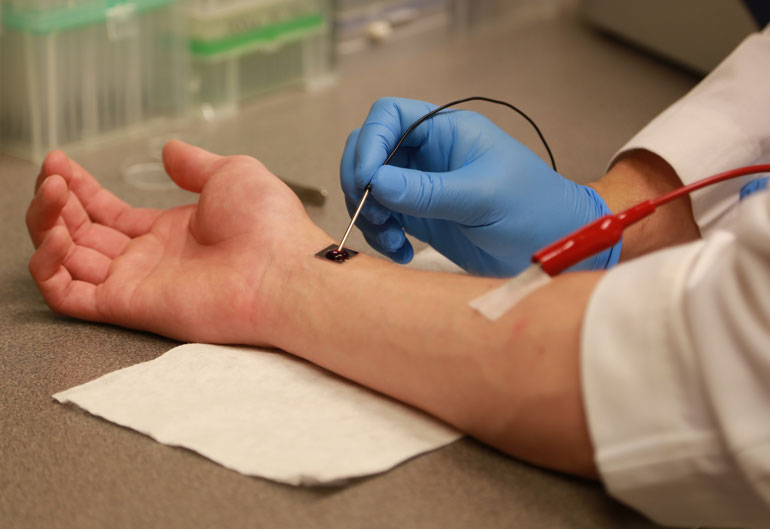Biomedical engineers in the US have developed a technology capable of transforming adult cells into something more valuable than gold – with just a single touch.
In a major breakthrough, biomedical engineers from Ohio State University Wexner Medical Centre and the College of Engineering were able to reprogram skin and follicular cells into functioning neurons. These induced neurons were used to facilitate brain recovery in mice that had suffered a stroke.
This was accomplished through a process called tissue nanotransfection (TNT), whereby a patient’s cells can be transformed into almost any other type of tissue, enabling damaged or aging organs, blood vessels and nerve cells to be repaired.
The researchers also successfully generated vascular cells from skin tissue in mice with severe injuries that had prevented normal blood flow to one of their hind legs. Within a week new blood vessels had formed and were successfully connected to the existing circulatory system, thus saving the limb.
The technology consists of a silicon chip that contains hundreds of thousands of nanochannels. On the top side of the chip, reprogramming factors (specially designed pieces of cDNA and mRNA required to transform the cell) are loaded into reservoirs, while the underside of the chip has direct contact with the skin.
An electrical pulse is passed through a plate-like negative electrode on top of the reservoirs and travels down through the needle-like positive electrode, which is inserted into the skin. The pulse acts to create pores in the cell membrane, which enables reprogramming factors to enter the cell while also driving the negatively charged molecules into the cell.
“The chip can be any size, but the ones we used for mouse transfection are 1 cm by 1 cm in size with 4 million patterned or equally distributed nanochannels,” said Dr L. James Lee, a professor of chemical biomolecular engineering and one of the project’s leads.
“When about 200 V of electric pulse is applied, skin cells in contact with the chip will be porated to form nano-sized pores. At the same time, some programming factors in the reservoir will be injected into cells via nanochannels by electrophoresis.”
Already TNT has an advantage, as the cost of the chip and reprogramming factors is very low.
“Our chips are made of silicon wafers using computer chip fabrication methods. It can be low-cost in mass production, just like computer chips,” Lee explained.
This work builds on previous research on nanochannel electroporation performed by Lee in 2011. He looked at an alternative to bulk electroporation and microfluidics electroporation, which could achieve the precise introduction and controlled doses of molecules into cells without causing cell mortality.
The chip has an exciting future, with the potential to deliver non-viral based genetic treatments, as well as negatively charged drugs and small molecules.
The efficiency of TNT is also exceptionally high, said Dr Chandan Sen, director of Ohio State’s Centre for Regenerative Medicine and Cell Based Therapies, who was also involved with the research. Sen quoted a 98 percent success rate of gene transfer in vitro.
Further studies are underway to gain a better understanding of the mechanisms that make TNT so successful, and clinical trials for treatment in humans are likely to start next year.
